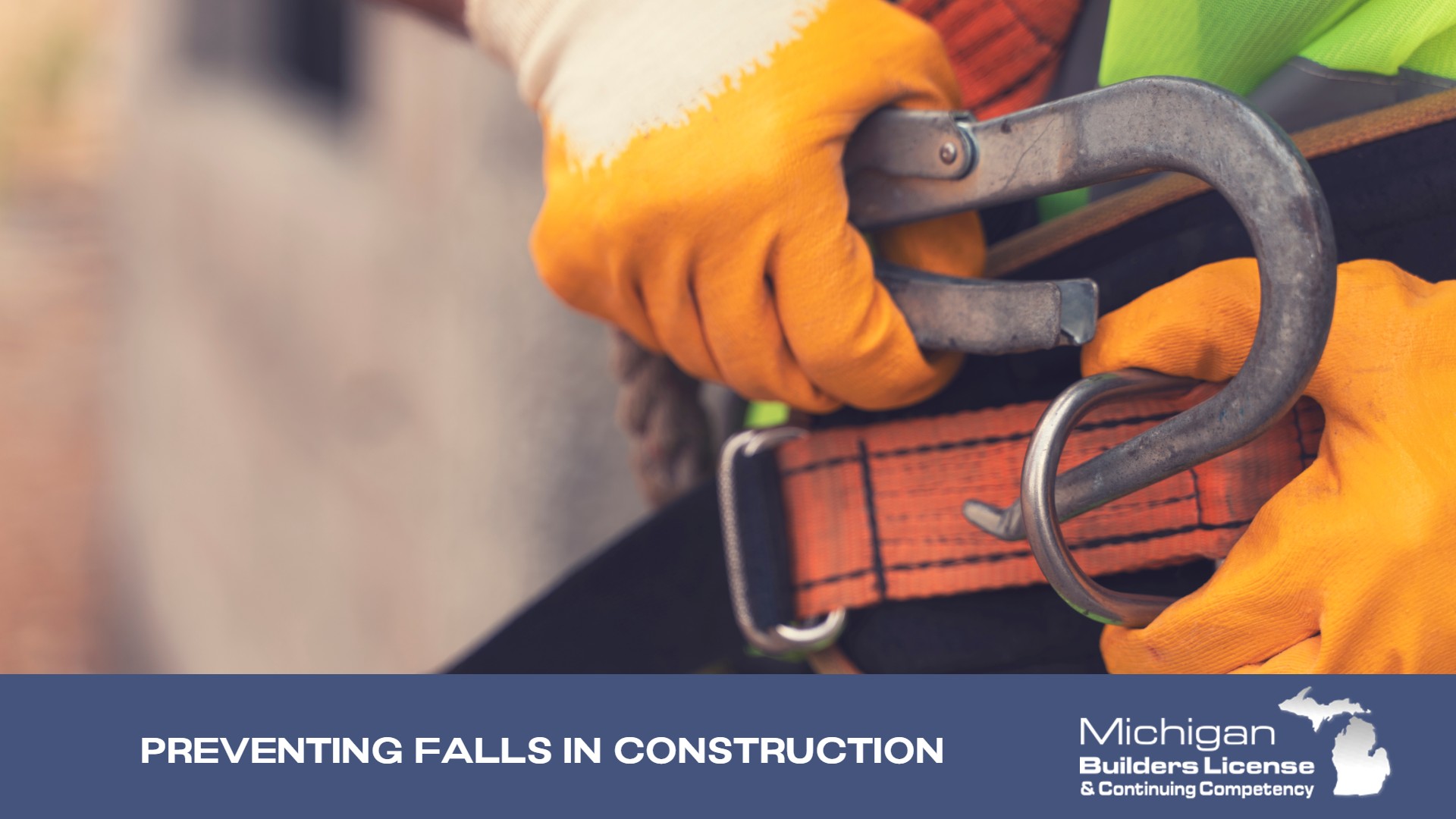Fall hazards are one of the leading causes of serious injuries and fatalities in the construction industry. In Michigan, fall protection is consistently ranked among the top 10 most frequently cited standards following MIOSHA inspections of worksites. Failure to comply with fall protection regulations not only puts workers at risk but can also lead to significant fines and legal consequences for builders and contractors. Understanding and implementing proper fall protection measures is essential for ensuring job site safety and compliance with MIOSHA standards.
Understanding Fall Protection Requirements
OSHA's Fall Protection Standard (29 CFR 1926.501) outlines the requirements for fall protection in construction. It mandates that fall protection be provided at elevations of six feet in the construction industry, with specific guidelines based on work conditions. Employers must also ensure that fall protection systems are regularly inspected and maintained to remain effective.
Key elements of fall protection include:
- Guardrails, Safety Nets, and Personal Fall Arrest Systems: These are the three primary types of fall protection required when working at heights of six feet or more.
- Proper Training: Workers must be trained on how to recognize fall hazards and use fall protection equipment correctly.
- Inspections and Maintenance: Equipment such as harnesses, lanyards, and anchor points must be inspected before each use to ensure their integrity.
- Protection from Falling Objects: Employers must provide toe boards, screens, or guardrail systems to prevent falling objects from striking workers below.
Common Fall Hazards and How to Prevent Them
MIOSHA inspections frequently identify violations related to fall protection, including inadequate safety systems, failure to train employees, and improper use of equipment. The most common fall hazards include:
- Unprotected Edges and Openings: Floors, roofs, and wall openings must have guardrails, safety nets, or personal fall arrest systems.
- Improper Ladder Use: Workers must use ladders that are the correct height and placed on stable ground, ensuring three points of contact at all times.
- Scaffolding Safety Violations: Scaffolds must be fully planked, equipped with guardrails, and secured to prevent tipping.
- Slips and Trips on Uneven Surfaces: Housekeeping practices should ensure walkways remain free of debris, tools, and cords.
The Cost of Non-Compliance
Ignoring fall protection standards can result in severe penalties. According to OSHA, failing to provide proper fall protection can lead to fines exceeding $15,000 per violation, with additional penalties for willful or repeated offenses. More importantly, non-compliance increases the likelihood of workplace injuries and fatalities, leading to lost productivity, increased workers’ compensation costs, and potential lawsuits.
Best Practices for Fall Protection Compliance
To ensure compliance with MIOSHA and OSHA fall protection regulations, Michigan builders should:
- Conduct regular safety audits and hazard assessments on job sites.
- Provide comprehensive fall protection training for all employees.
- Use appropriate fall protection systems and ensure they are properly installed and maintained.
- Foster a safety-first culture by encouraging workers to report hazards and follow safety protocols.
Conclusion
Fall protection is not just a regulatory requirement—it is a critical component of workplace safety that saves lives. Michigan builders must stay proactive in addressing fall hazards, ensuring that all workers are adequately trained and equipped with the necessary protective measures. By prioritizing fall protection, construction companies can create a safer work environment, avoid costly fines, and, most importantly, prevent injuries and fatalities.
Sources
- Occupational Safety and Health Administration (OSHA). (n.d.). Fall Protection in Construction. Retrieved from https://www.osha.gov/sites/default/files/publications/OSHA3666.pdf





